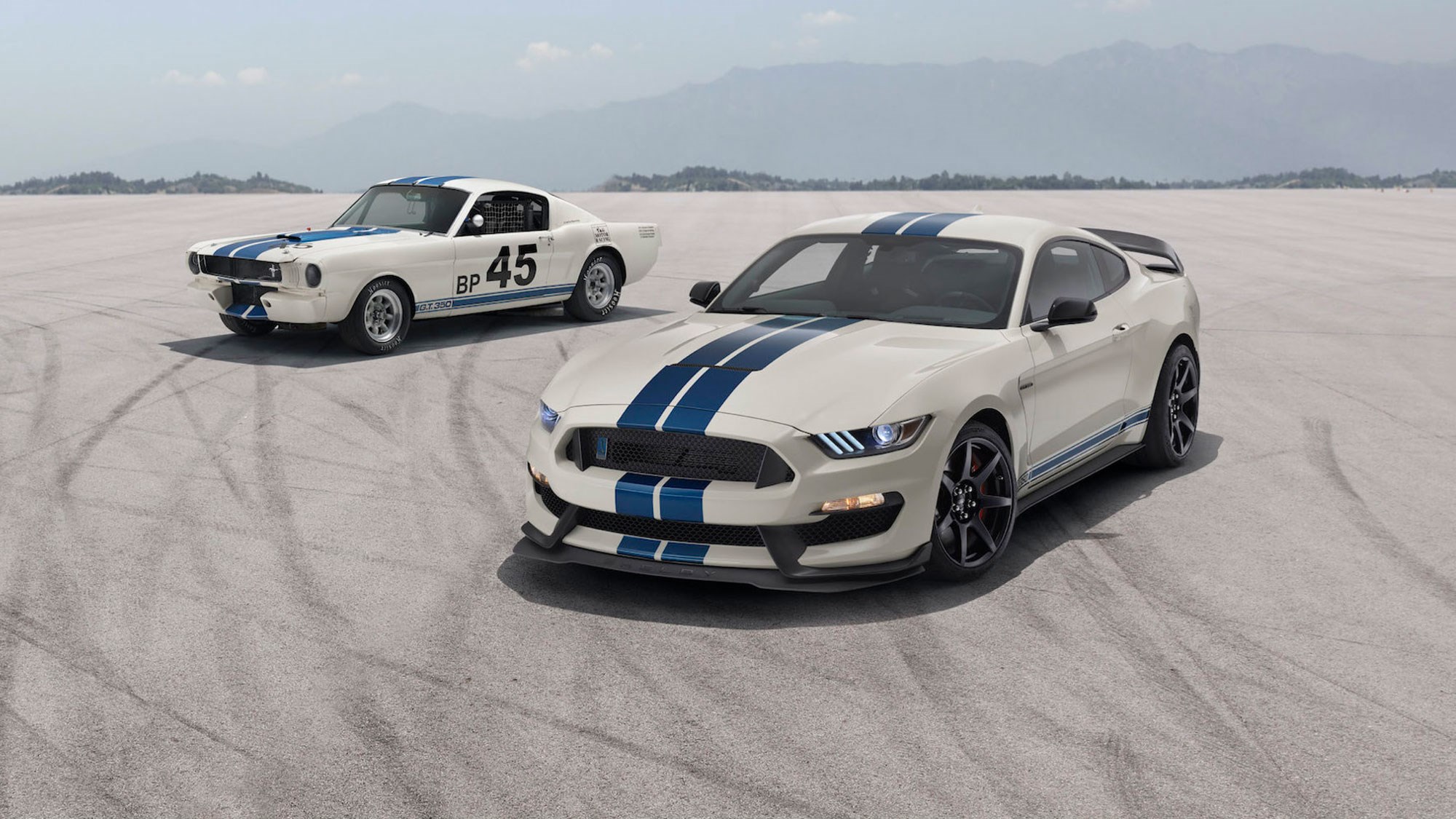The Ford Mustang debuted in 1964, revolutionizing the American car industry. It became an iconic symbol of performance and style.
Ford Mustang, introduced in 1964, quickly became a cultural phenomenon. Designed to be affordable and stylish, it captured the hearts of millions. The Mustang’s sleek design, powerful engine options, and customizable features made it a favorite among car enthusiasts. Its success led to the creation of the “pony car” class, influencing many other manufacturers.
Over the years, the Mustang evolved, incorporating modern technologies while maintaining its classic appeal. Its legacy continues to grow, solidifying its status as an automotive icon. The Mustang remains a symbol of American muscle and innovation in the automotive world.
Origins Of The Mustang
The Ford Mustang is one of the most iconic cars in history. Its journey began in the early 1960s. The Mustang revolutionized the automobile industry. It brought a fresh and sporty design to the market. Let’s explore the origins of this legendary car.
Birth Of A Legend
In 1961, Ford’s Vice President Lee Iacocca had a vision. He wanted a car that was affordable and stylish. This led to the creation of the Mustang. The first Mustang was unveiled on April 17, 1964. It was introduced at the New York World’s Fair.
The car was an instant hit. It sold over 22,000 units on the first day. By the end of the year, over 400,000 Mustangs were sold. The Mustang became a cultural icon. It represented freedom and adventure. The car appealed to young drivers and car enthusiasts alike.
First Generation Design
The first generation of the Mustang lasted from 1964 to 1973. It featured a long hood and short rear deck. This design was inspired by European sports cars.
Ford offered many options for customization. Buyers could choose from various engines, colors, and interiors. The base model had a 170-cubic-inch six-cylinder engine. There were also V8 options for more power.
The Mustang’s design evolved over the years. In 1965, Ford introduced the GT package. It included a V8 engine, disc brakes, and special badges. The Shelby GT350, a high-performance version, was also introduced. It became a favorite among racing enthusiasts.
By 1969, the Mustang had a more aggressive look. It featured a wider body and more powerful engines. The Mach 1 and Boss 302 models were introduced. They became famous for their speed and performance.
The first generation Mustang set the stage for future models. It established the Mustang as a symbol of American muscle cars. Its legacy continues to inspire car enthusiasts today.

Credit: news.classicindustries.com
The Muscle Car Era
The Ford Mustang became an icon during the Muscle Car Era. This period began in the mid-1960s. It was characterized by powerful engines and aggressive designs. The Mustang stood out with its unique style and performance.
Performance Enhancements
During the Muscle Car Era, the Mustang saw significant performance enhancements. Engineers focused on increasing horsepower and torque. The introduction of V8 engines marked a major upgrade.
- 1965: Introduction of the 289 cubic inch V8 engine
- 1967: Launch of the 390 cubic inch V8 engine
- 1969: Debut of the Boss 429 engine
These engines provided better speed and acceleration. The Mustang became a favorite among car enthusiasts.
Racing Success
The Ford Mustang saw immense racing success during this era. Its high performance made it a winner on many tracks. The Mustang competed in various racing events and often emerged victorious.
| Year | Event | Achievement |
|---|---|---|
| 1965 | SCCA B-Production | Champion |
| 1966 | Trans-Am Series | Winner |
| 1969 | Trans-Am Series | Champion |
These victories helped build the Mustang’s legendary status. The car’s success on the track mirrored its popularity on the streets.
The 1970s Transition
The 1970s marked a significant era for the Ford Mustang. This decade saw major changes in design and performance. The oil crisis and new regulations influenced these shifts. Let’s explore how these factors impacted the iconic car.
Oil Crisis Impact
The oil crisis of the 1970s greatly affected the automotive industry. Gas prices soared, and fuel efficiency became a priority. People wanted cars that used less fuel. This change forced Ford to rethink the Mustang’s design and engine. The powerful V8 engines became less popular. Smaller, more fuel-efficient engines gained favor.
Design Changes
The Mustang’s design saw notable changes in the 1970s. The car became more compact and lighter. These changes aimed to improve fuel efficiency. The Mustang II, introduced in 1974, embodied this new philosophy. It featured a smaller body and a four-cylinder engine option. The focus was on economy, not just power.
| Year | Engine Options | Design Features |
|---|---|---|
| 1970 | V8 Engines | Muscular and powerful |
| 1974 | Four-cylinder engines | Compact and lightweight |
Despite these changes, the Mustang remained a beloved car. Its new design catered to the needs of the era. The Mustang II was smaller but still stylish. It offered a blend of economy and performance. Ford’s ability to adapt kept the Mustang relevant and popular.
Fox Body Revolution
The Ford Mustang experienced a significant transformation during the Fox Body era. This period, spanning from 1979 to 1993, brought about numerous changes. These changes made the Mustang more modern and competitive. Let’s dive into the key aspects of this revolutionary phase.
Engineering Innovations
The Fox Body Mustang introduced many engineering advancements. It featured a new platform that was lighter and more efficient. This allowed for better performance and handling.
One of the standout features was the fuel injection system. This replaced the older carburetor system. The new system improved fuel efficiency and power. The Fox Body also came with a range of engine options. These included the famous 5.0-liter V8, which became a favorite among enthusiasts.
| Feature | Benefit |
|---|---|
| Fuel Injection System | Better fuel efficiency and power |
| New Platform | Lighter and more efficient |
| 5.0-liter V8 Engine | Increased performance |
Cultural Influence
The Fox Body Mustang became a cultural icon. It was a symbol of American muscle cars in the 1980s and 1990s. The car appeared in many movies and TV shows, making it a household name.
Many car enthusiasts and collectors still cherish the Fox Body Mustang. It is known for its distinctive design and powerful performance. The car also inspired many aftermarket modifications. This made it a popular choice for car customizers.
- Symbol of American muscle cars
- Featured in movies and TV shows
- Popular among car customizers
The Fox Body era left a lasting impact on the Mustang legacy. It brought engineering innovations and cultural significance. This era continues to be celebrated by Mustang fans worldwide.
Modern Redesign
The Ford Mustang has undergone significant transformations over the years. The modern redesign period marked a new era for this iconic car. This era brought about major upgrades and technological advancements, making the Mustang more powerful and efficient than ever before.
New Millennium Upgrades
In the early 2000s, the Ford Mustang received major updates. The design became more aggressive and aerodynamic. New engine options were introduced, offering more power and better fuel efficiency. The interior also saw improvements, with enhanced materials and features.
- 2005: Introduction of the retro-inspired S197 model
- 2011: Launch of the 5.0L V8 engine
- 2015: Release of the sixth-generation Mustang
Technological Advancements
The modern Ford Mustang is packed with advanced technologies. Safety features include adaptive cruise control and lane-keeping assist. Infotainment systems have also seen upgrades, with the inclusion of SYNC 3 and Apple CarPlay.
| Year | Technological Feature |
|---|---|
| 2010 | Introduction of SYNC infotainment system |
| 2018 | Launch of the digital instrument cluster |
| 2020 | Inclusion of Ford Co-Pilot360 safety features |
Modern Mustangs also come with performance-enhancing technologies. Features like magnetic ride control and selectable drive modes optimize driving experience. These advancements ensure that the Mustang remains a leader in the sports car market.

Credit: www.carmagazine.co.uk
Special Editions
The Ford Mustang has a rich history. Special editions make it even more special. These versions are unique and iconic.
Shelby Variants
Shelby variants are legendary. They bring performance to a new level. The GT350 and GT500 are the most famous.
- GT350: Introduced in 1965. It has a 306 horsepower engine.
- GT500: Debuted in 1967. It features a powerful 428 cubic inch V8.
Both models have racing stripes. They also have improved suspension and brakes.
Bullitt And Mach 1
The Bullitt Mustang honors the 1968 film “Bullitt”. It features a sleek, minimalist design.
| Year | Engine | Special Features |
|---|---|---|
| 1968 | 390 cubic inch V8 | Highland Green paint |
| 2001 | 4.6L V8 | Modern updates with retro feel |
Mach 1 models are performance-focused. They debuted in 1969.
- 1969: 428 cubic inch Cobra Jet engine.
- 2003: 4.6L V8 with Shaker hood scoop.
Mach 1 combines power and style. It remains a fan favorite.
Global Expansion
The Ford Mustang, an American icon, has also captivated global markets. Its journey from American streets to international fame is remarkable. Let’s explore the Mustang’s global expansion.
International Markets
The Mustang first expanded to Canada and Mexico. Then, it reached Europe and Asia. In 1965, the Mustang appeared in Europe. Japan saw its first Mustang in the 1970s. Today, the Mustang is available in over 140 countries.
Sales Milestones
The Mustang achieved significant sales milestones globally. In 2015, Ford sold over 100,000 Mustangs outside the U.S. This marked a record-breaking year. The Mustang became the best-selling sports car worldwide.
Here are some notable sales milestones:
- 2016: Best-selling sports car in Germany
- 2018: Over 500,000 units sold in Europe
- 2020: Mustang was the best-selling sports car in Australia
The Mustang’s appeal continues to grow, with new fans every year.
Future Of The Mustang
The Ford Mustang has a rich history of power and style. As we look ahead, the future of the Mustang promises exciting innovations. With a focus on electric power and sustainability, the Mustang is set to lead the way in modern automotive excellence.
Electric Innovations
Electric vehicles are changing the automotive landscape. The Ford Mustang is no exception. Ford has introduced the Mustang Mach-E, an all-electric SUV. This vehicle combines Mustang’s iconic design with cutting-edge electric technology.
The Mustang Mach-E offers impressive features:
- Zero emissions
- Quick acceleration
- Advanced driver-assist technologies
With multiple models, the Mach-E caters to various preferences. From the sporty GT model to the efficient Select trim, there’s an option for everyone.
Sustainability Focus
Ford is committed to a greener future. The Mustang’s evolution reflects this focus. By embracing electric power, Ford aims to reduce the carbon footprint of its vehicles.
The company has set ambitious sustainability goals:
- Reduce CO2 emissions
- Increase use of renewable materials
- Implement energy-efficient manufacturing processes
These efforts ensure the Mustang remains a symbol of performance and responsibility. Future Mustangs will feature more eco-friendly materials and technologies.
Ford’s commitment to sustainability extends beyond the vehicle itself. The company invests in renewable energy and eco-friendly practices. This holistic approach ensures a sustainable future for the Mustang and the planet.

Credit: www.stangbangers.com
Frequently Asked Questions
What Year Was The First Ford Mustang Released?
The first Ford Mustang was released in 1964. It was introduced at the New York World’s Fair.
How Many Generations Of Ford Mustang Are There?
There are six generations of Ford Mustang. The latest generation began in 2015 and continues today.
What Is The Most Powerful Ford Mustang?
The most powerful Ford Mustang is the Shelby GT500. It has a 760-horsepower supercharged V8 engine.
When Did The Ford Mustang Become A Muscle Car Icon?
The Ford Mustang became a muscle car icon in the late 1960s. The introduction of the Mustang GT and Shelby models played a big role.
Conclusion
The Ford Mustang has left a lasting impact on automotive history. Its iconic design and performance continue to captivate enthusiasts. Each model tells a unique story, reflecting decades of innovation. The Mustang’s legacy is a blend of power, style, and cultural significance.
This car remains a symbol of American muscle and automotive excellence.






